Teeth in a Day
All on 4, Teeth tomorrow, teeth in 10 minutes, teeth yesterday….there are so many “catchy” names but the concept is basically taking a patient that has teeth or dentures and converting them to implant teeth in one day. Our doctor offers every research validated protocol for immediate implant teeth but customizes the surgery and implant placement to the patient’s specific needs. Dental implants should not be a “one size fits all” commodity and there are significant differences in the products advertised that our doctor can review with you.
Our doctor teams up with some highly skilled dentists and prosthodontists to offer this to our patients. The process starts with removing any remaining teeth and placing implants. We then connect parts to accept the implant teeth and then the teeth are secured into the implants. Most cases are done while the patient is under anesthesia and the post operative discomfort is surprisingly minimal. The final set of teeth are delivered after the implants have integrated to the bone and the soft tissue has healed.


This patient had both upper and lower implant reconstruction and elected to undergo one arch at a time. The surgery is usually performed under anesthesia and the patient has the customized teeth delivered the same day.
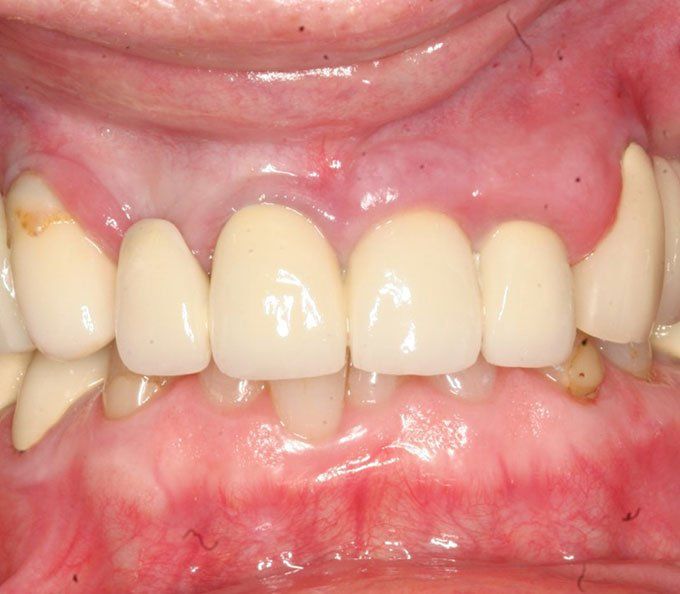
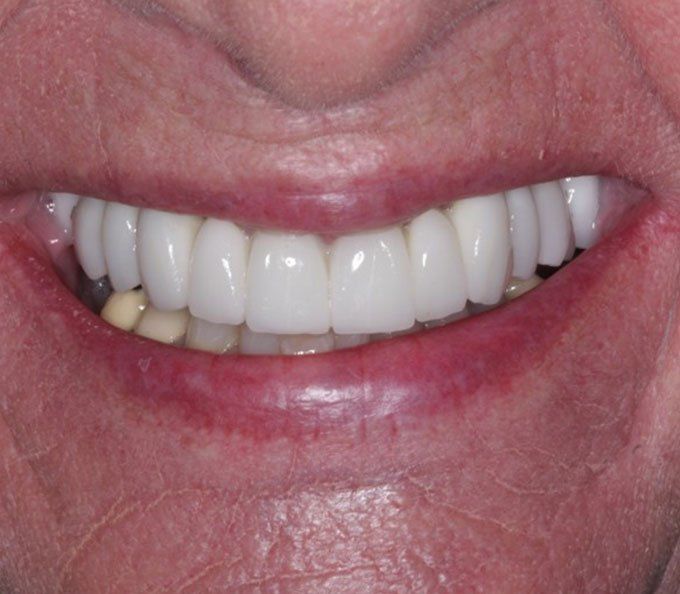
When a patient needs to transition to full upper tooth removal, it allows us to optimize esthetics and change the facial profile. We removed all upper teeth and placed implants and she went home that day with her new smile.
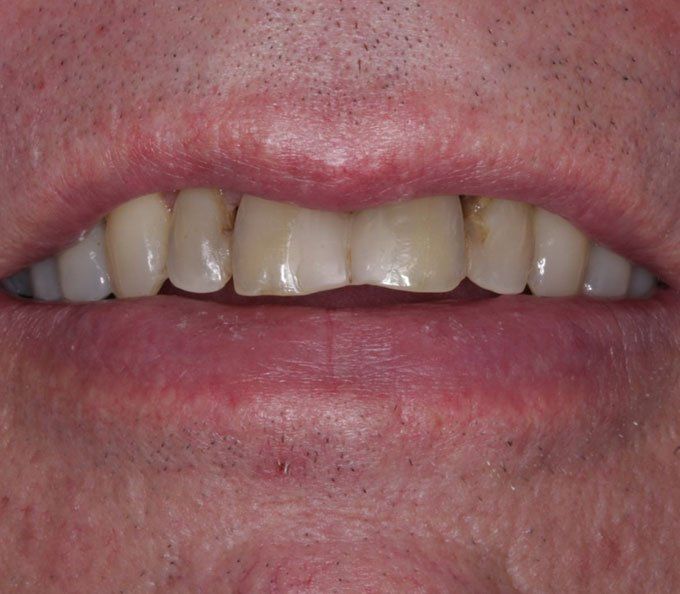
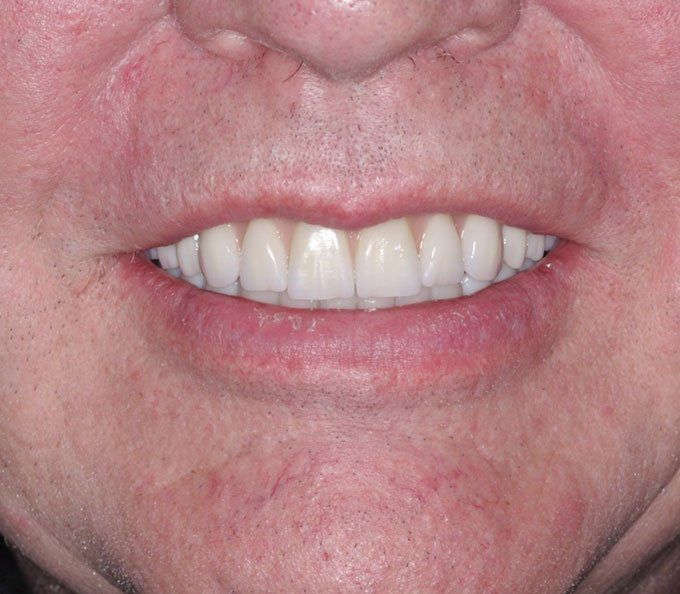
This patient had full upper and lower implant reconstruction. We removed all teeth and placed implants all in the same surgery. The teeth were delivered the same day and the patient never went a day without teeth.

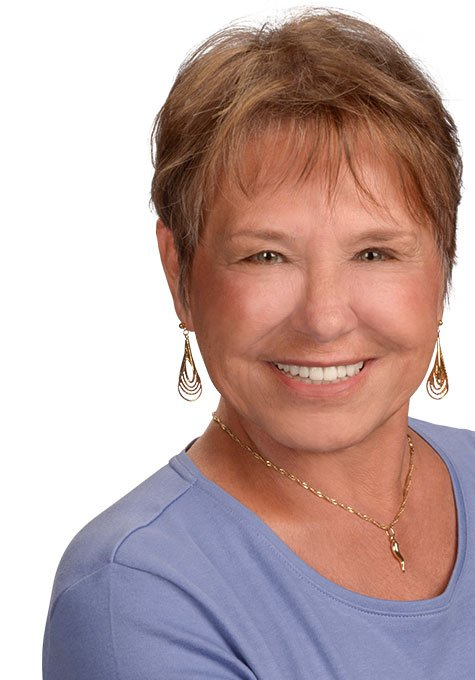
This patient did not want to have an upper denture so we removed the upper teeth and placed implants in the same surgery. Her final teeth looked and felt like normal teeth.
Am I a candidate?
Many patients assume that they may not be a candidate based on age or that teeth have been missing for a long time. During an implant consult, our doctor performs a complete exam and cone beam CT scan. They are able to digitally perform surgery and assess the available bone and soft tissue for implants. Most patients have multiple implant options available to them and even patients that have been in dentures for years are usually good candidates. There are a few contra-indications to dental implants and also a few risk factors that our doctor will address if applicable, but the vast majority of our patients undergo successful implant teeth replacement.
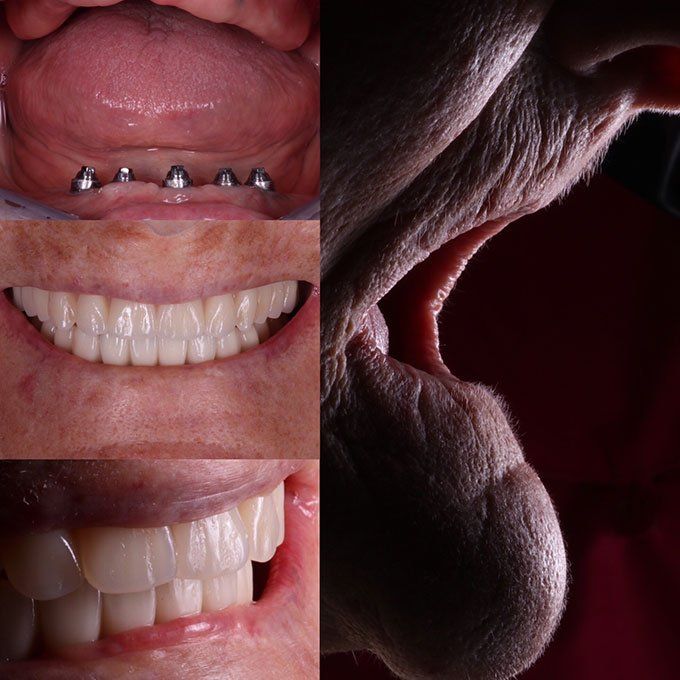
This patient experienced significant bone loss and changes in her facial appearance. Though she had significant bone loss, we worked with her anatomy to provide 5 implants to support a full set of teeth.
Facial bone loss from missing teeth (Right Image). Five implants in the lower jaw to support teeth (Upper Left Image).

Description Title
X-ray shows teeth on top of the five dental implants in the lower jaw that provide a solid foundation for the teeth.
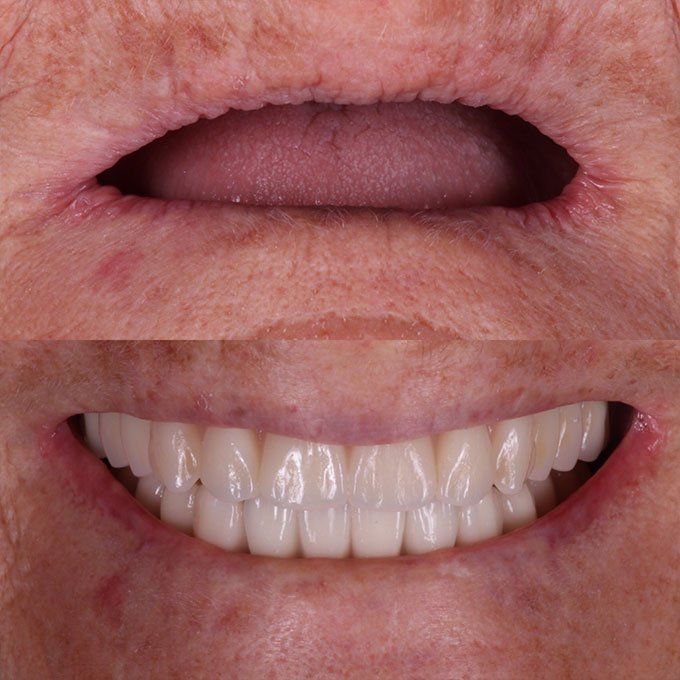
Description Title
Image on the top is before dental implants. Image on the bottom is after dental implants.
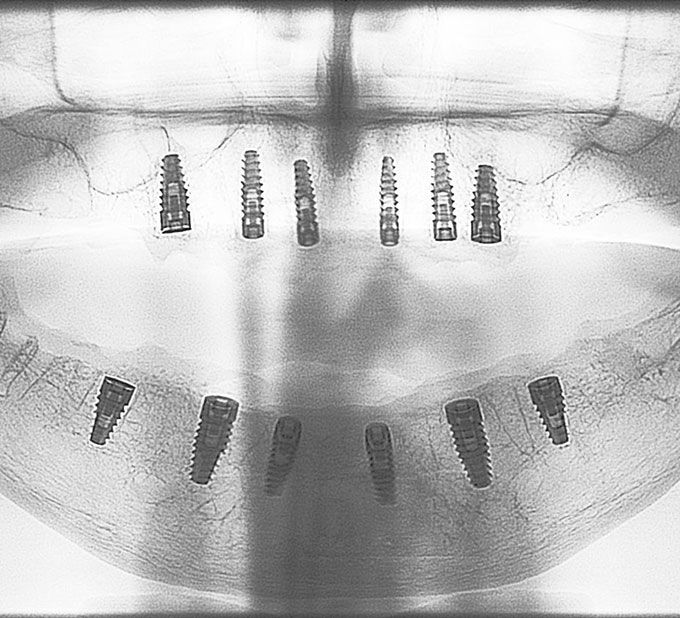
Many cases that involve removing multiple teeth allow us to utilize the best anatomy and avoid areas that have less bone. This patient had full upper and lower extractions and implant placement in the same surgery. The implants are placed in areas with the best bone avoiding the sinus and vital nerve anatomy. We utilize sophisticated software programs to plan and place the implants.
Full upper and lower implants to support teeth.
FAQs
-
How long does the process take?
As long as it takes to do it right! Some cases finish quick and some take time to achieve excellent results. Every patient is unique and we will review the timeline with you during your consultation. If it’s a single tooth implant replacement, it may be completed all in one surgery or it could be several steps staged over months. Sometimes, a patient needs bone grafting prior to implants so the timeline really is customized to the patient’s anatomy and goals. There is a push for speed with implant therapy but sometimes “slow and steady wins the race”. Our doctor is trained in all techniques and will recommend the best protocol for you.
-
What are the success rates?
Implants in general have an unparalleled success rates when evaluated against other medical implant devices. The literature routinely reports success rates in the upper nineties and our doctors exceed the research proven benchmarks of success, both in the short and long term.
-
Am I too old for implants?
This is probably the number one question we get during implant consultations. The answer is no, there is no age contraindication to dental implant replacement of teeth. Our doctor has treated patients well into their nineties with implants and research has shown that tooth replacement is correlated with longer lifespan.
-
Are implants all the same?
As with most products, there is a difference in quality. We only uses the best implant manufacturers backed by decades of science. There are a lot of tricks used to advertise low cost implants including offering inferior implant parts or not including necessary components. Long term success comes with doing it the right way every time.
-
Who should I trust with my implant?
Implant and bone grafting surgery have steep learning curves requiring years of training to master. While most patients say their implant surgery was easy, it is still an implantable device that if not done properly, can yield years of trouble and cost. Vet your implant surgeons appropriately. Are they board certified in a surgical specialty? How many cases have they successfully treated? Are they trained to offer all anesthetic options for comfort?
Our doctor has over a decade of experience and thousands of successful cases. They are a board certified Oral and Maxillofacial surgeon licensed as both a dentist and a doctor. We deliver customized implant therapy utilizing all available technology to yield success rates that exceed the research benchmarks.
Please contact us with any questions you may have.

Medallion Periodontics provides exceptional periodontal care to the Sarasota community.
BROWSE OUR SITE
Medallion Periodontics. All rights reserved.
